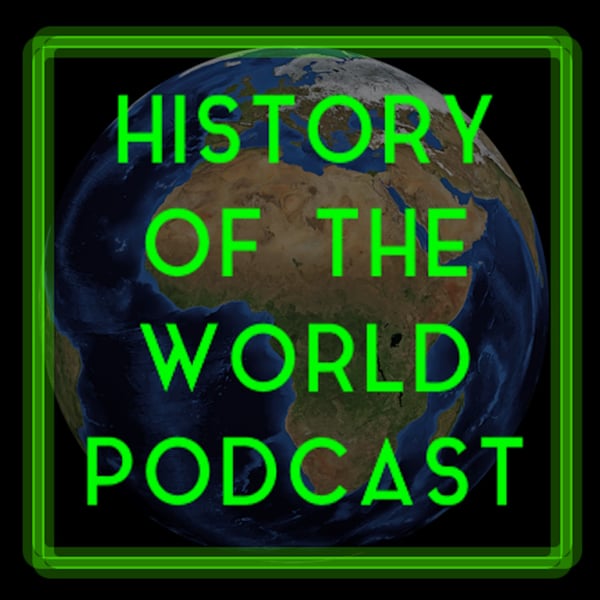Vol 4 Ep 64 - Korea: Silla and Goryeo
History of the World podcast
Chris Hasler
4.8 • 971 Ratings
🗓️ 18 December 2023
⏱️ 36 minutes
🧾️ Download transcript
Summary
668 - 1392 - The period following the Three Kingdoms period was a time for Korea to be unified on and off, but still there were many outside influences trying to conquer the resource rich peninsula. This would also bring positive cultural reforms to the people of the peninsula too.
--- Send in a voice message: https://podcasters.spotify.com/pod/show/historyoftheworldpodcast/messageTranscript
Click on a timestamp to play from that location
| 0:00.0 | The History of the World Podcast, written and presented by Chris Hasler. Volume 4, The Medieval World. |
| 0:24.0 | Episode 64, Silla and Korea. and Let us summarize the story of Korea up to the 7th century. |
| 0:58.0 | The Korean Peninsula didn't actually form until after modern humans migrated to the area. |
| 1:07.0 | As sea levels rose, the Japanese islands were separated from the Asian mainland and the yellow sea formed which caused |
| 1:16.6 | a peninsula of land to become isolated from the mainland apart from a 100 mile stretch of land at its north, which allowed migrations |
| 1:27.7 | in and out of the peninsula. |
| 1:30.9 | The first societies of the peninsula embraced pottery, agriculture and aquaculture. |
| 1:39.9 | This would have been followed in the first century B.C. by metallurgy, and significantly, bronze working. |
| 1:48.4 | It's may have been during this period that the first polity of significant note emerged, referred |
| 1:56.6 | to by the name Kochesen, which is believed to have dominated the area in and around the Laudong Peninsula, which is now on the Chinese |
| 2:07.9 | side of the North Korean border. |
| 2:11.7 | Kojosun would have had a convenient maritime trade link from the Lealdong Peninsula to the |
| 2:18.5 | Shandong Peninsula and consequently the heartland of Chinese cultures which would aid the wealth |
| 2:26.0 | and subsequent modernization of the Kajosun state. |
| 2:30.3 | Chinese aggression towards Kajosun in around 300 B.C.E. pushed Kajosun into the north of the actual Korean Peninsula. During this time the societies in the |
| 2:46.2 | south of the peninsula were living a much simpler life than the modernizing state |
| 2:51.2 | of Kajosan, but migrations would bring modern culture such as ironmongery, weaponry, |
| 2:59.1 | and politics to the south. |
| 3:02.1 | The beginnings of the Han states would emerge in the the in the North was also exposed to the nomadic ways of life of the |
| 3:14.0 | the Hyungnu peoples of the Steplands. |
| 3:17.6 | And with this came the opportunity to learn |
| 3:20.4 | about horsemanship and the use of cavalry in armies. |
... |
Please login to see the full transcript.
Disclaimer: The podcast and artwork embedded on this page are from Chris Hasler, and are the property of its owner and not affiliated with or endorsed by Tapesearch.
Generated transcripts are the property of Chris Hasler and are distributed freely under the Fair Use doctrine. Transcripts generated by Tapesearch are not guaranteed to be accurate.
Copyright © Tapesearch 2025.

